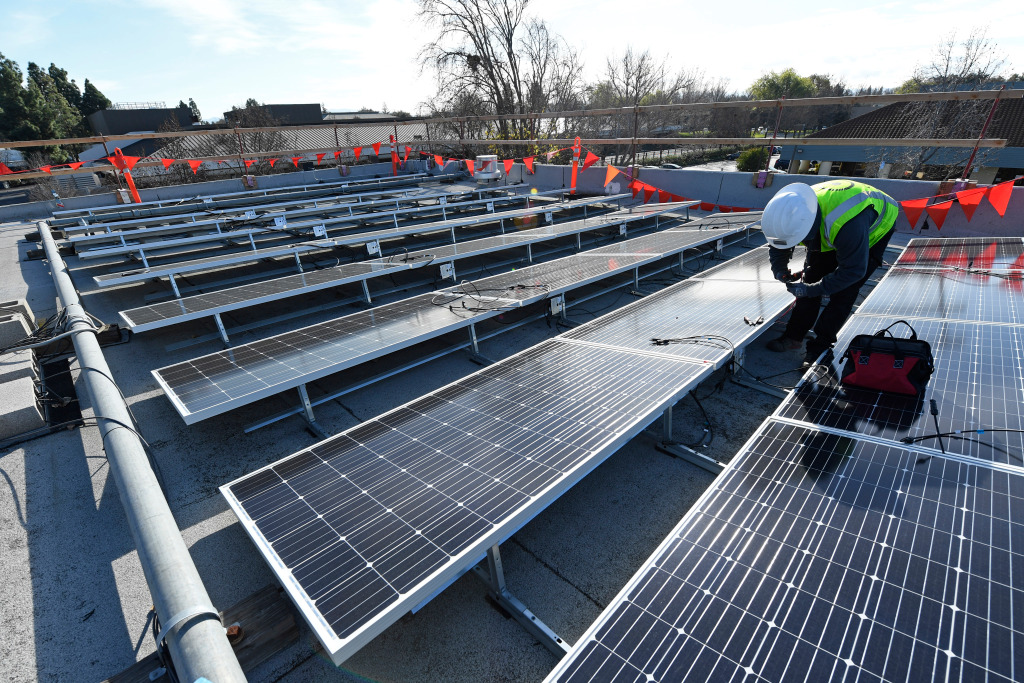InReach Ventures, the so-called “AI-powered” venture capital firm based in London, is announcing the first closing of a new €53 million fund targeting early-stage European technology companies — surpassing the original fund target of €50 million, apparently.
Founded by former Balderton Capital General Partner Roberto Bonanzinga, along with Ben Smith (former U.K. Engineering Director at Yammer) and John Mesrie (former General Counsel at Balderton Capital), InReach set out in 2015 to use technology to help scale VC, especially across Europe’s idiosyncratic and highly fragmented market.
The firm’s proprietary software-based approach, which is underpinned by machine learning, claims to be able to generate and evaluate deal-flow more efficiently than traditional venture firms that mostly employ human VCs alone — although, admittedly, practically every VC firm is underpinned by some eliminate of data science and/or technology these days. Berlin’s Fly VC is another machine learning-enabled early-stage VC that comes to mind.
However, InReach certainly appears to be putting its money where its mouth is, disclosing that it has invested over €3 million in the development of its software, codenamed “DIG”. To back this up, Bonanzinga tells me the firm employs “more software engineers than investors”. (I saw an early demo of the software a couple of years ago and even then it seemed legit.)
Regards the new fund, Bonanzinga says InReach is targeting the most promising and innovative startups across Europe, primarily in the areas of consumer internet, software as a service and marketplaces. “We are geographically agnostic and will invest in companies anywhere in Europe, from Helsinki to Barcelona, from Warsaw to Rome,” he says. “In most cases we will be the first institutional investors and our first cheques will be between €500,000 and €2 million”.
To date, InReach Ventures has invested in eight startups from across Europe. They include Oberlo (Lithuania), which was subsequently acquired by Shopify, Soldo (Italy/UK), Tutorful (U.K.), Shapr3D (Hungary), Traitly (Sweden) and Loot (Germany).
Below follows a lightly edited Q&A with Bonanzinga on the new fund, how AI can be used to scale venture capital, and why machines won’t put VCs out of a job entirely any time soon.
TC: You have often said that venture capital doesn’t scale, especially across a fragmented market like Europe, but what do you mean by this?
RB: People get very excited about ecosystems but the data shows that startups can come from anywhere; the big technology hubs or more remote locations. This is carried through to Europe’s largest exists: from Betfair in London to Zalando in Berlin, from Supercell and Spotify in the Nordics, to Critio in France and Yoox in Italy, and so on. So not only is deal sourcing fragmented across Europe, but so are the returns.
Traditional ventures firms have looked to manage this fragmentation by throwing people at the problem, but if you want true coverage you need to have a presence in every city in Europe. This is how you need to think of our technology platform, as like having a highly trained associate in every city and town across the whole of Europe, providing structured diligent deal-flow. With this data/technology driven approach we can be truly pan-European at the early-stage, even as the first institutional investor on the cap-table.
TC: A lot of VCs say they use technology to help find or manage deal-flow, how is InReach any different?
RB: Many venture firms talk about data and software. Lately, it has become a hot topic in pitches to limited partners. I predict a new hype: the rush of needing to check the box of “we have a data strategy”. We will have many firms with 30+ investment professionals and a data engineer in a corner. The real question is how many firms are willing to transform their professional service DNA into a product DNA? As always, this is more of a people/organisational question, rather than a question simply of the use of technology.
Take a look at InReach, we are a very atypical founding team for a venture firm. In particular, Ben Smith comes from a software engineering background and has built many data platforms and product development teams (most recently at Yammer/Microsoft). The majority of the people at InReach are software engineers. This is the only Venture Firm we know in which there are more software engineers than investors! So far we have invested over €3m in developing our proprietary technology platform.
TC: Without giving away your secret sauce, how does the InReach platform work, both in terms of the machine learning/feedback loop or the signals/data you plug into it?
RB: From a technology perspective, our logical architecture is primarily based on 3 distinct layers: data, intelligence, and workflow. The data layer is a mix of massive data aggregation, with deep data enhancement, including the generation of a large set of original data. The intelligence layer makes sense of these millions of data points through an ensemble of machine learning algorithms, ranging in complexity from simple rules to advanced networks. Given this data-driven approach and the significant deal-flow this generates, we invest heavily in building a workflow product which allows us to efficiently process thousands of companies each month.
TC: You say the final investment decision is still made by humans: why is that and do you think this will always be the case?
RB: As with any AI company, it’s all about data. We have spent the past 3 years aggregating data from across the internet and building algorithms to provide us with significant dealflow. Much more crucially, we have been collecting and generating our own proprietary data-set of investment decisions and how these startups grow and adapt over time. Clearly this will only get more powerful.
However, especially at this early-stage, so much of the investment decision is based on the founders and what we call the DNA fit of the founders and the problem they are trying to solve. Some of this can be encoded in algorithms and learnt by AI, but there are still intangibles that ultimately require that we ask the question: do we enjoy spending time together?
RB: What has been the reaction by under the radar founders when they are discovered really early via InReach’s software?
RB: The first question is always ‘How did you find out about us?’. Once we explain what we do and how the platform works we create an immediate connection with the entrepreneur. This is exactly what happened when we reached out to 5 entrepreneurs in Vilnius who had started a company called Oberlo. Over the following year, we helped them grow and expand to 30 people across both Vilnius and Berlin, prior to their acquisition by Shopify.
We are taking a very entrepreneurial approach to investing; we run InReach more as a product development organisation, rather than a professional services firm, so we look and feel native to the entrepreneurs we talk to. We try to share our experiences and current-best-practices through the company building process, whether it be OKRs, different agile development methodologies, product roadmaps, etc.
Reaching out to promising entrepreneurs early is not the only advantage that DIG gives us. We are also very efficient and responsive when analysing inbound opportunities. In fact, if you look at our website, we optimize our website to convert visitors to share their startup with us. We are not concerned with being bombarded by opportunities because we have developed a scalable workflow that allows us to efficiently manage significant dealflow.










